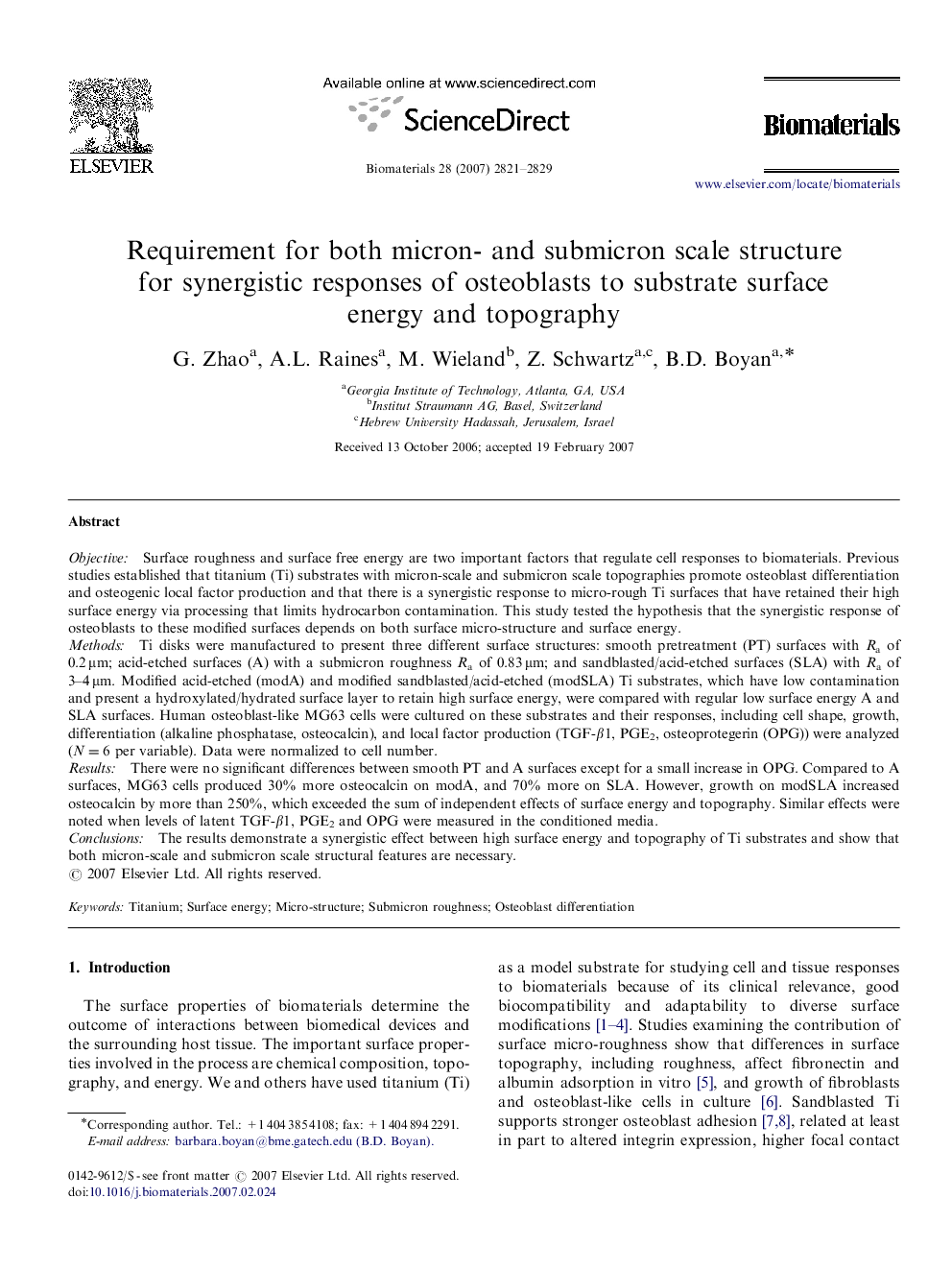| کد مقاله | کد نشریه | سال انتشار | مقاله انگلیسی | نسخه تمام متن |
|---|---|---|---|---|
| 9988 | 657 | 2007 | 9 صفحه PDF | دانلود رایگان |

ObjectiveSurface roughness and surface free energy are two important factors that regulate cell responses to biomaterials. Previous studies established that titanium (Ti) substrates with micron-scale and submicron scale topographies promote osteoblast differentiation and osteogenic local factor production and that there is a synergistic response to micro-rough Ti surfaces that have retained their high surface energy via processing that limits hydrocarbon contamination. This study tested the hypothesis that the synergistic response of osteoblasts to these modified surfaces depends on both surface micro-structure and surface energy.MethodsTi disks were manufactured to present three different surface structures: smooth pretreatment (PT) surfaces with Ra of 0.2 μm; acid-etched surfaces (A) with a submicron roughness Ra of 0.83 μm; and sandblasted/acid-etched surfaces (SLA) with Ra of 3–4 μm. Modified acid-etched (modA) and modified sandblasted/acid-etched (modSLA) Ti substrates, which have low contamination and present a hydroxylated/hydrated surface layer to retain high surface energy, were compared with regular low surface energy A and SLA surfaces. Human osteoblast-like MG63 cells were cultured on these substrates and their responses, including cell shape, growth, differentiation (alkaline phosphatase, osteocalcin), and local factor production (TGF-β1, PGE2, osteoprotegerin (OPG)) were analyzed (N=6 per variable). Data were normalized to cell number.ResultsThere were no significant differences between smooth PT and A surfaces except for a small increase in OPG. Compared to A surfaces, MG63 cells produced 30% more osteocalcin on modA, and 70% more on SLA. However, growth on modSLA increased osteocalcin by more than 250%, which exceeded the sum of independent effects of surface energy and topography. Similar effects were noted when levels of latent TGF-β1, PGE2 and OPG were measured in the conditioned media.ConclusionsThe results demonstrate a synergistic effect between high surface energy and topography of Ti substrates and show that both micron-scale and submicron scale structural features are necessary.
Journal: Biomaterials - Volume 28, Issue 18, 2007, Pages 2821–2829